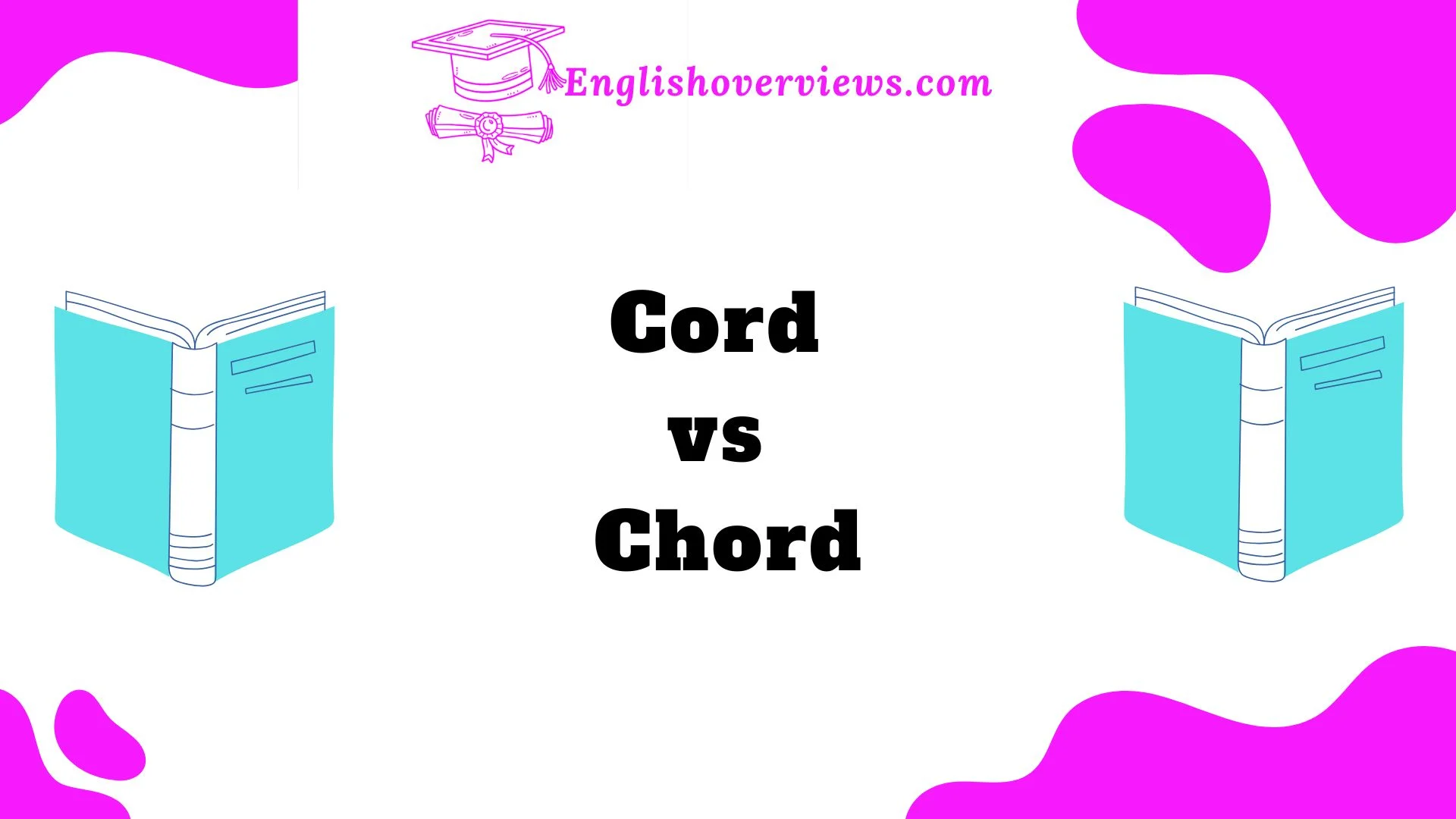Homophones like “cord” and “chord” often trip people up, creating confusion in writing and conversation. At first glance, they may sound identical, but their meanings and uses couldn’t be more different.
While one represents tangible objects like wires and ropes, the other finds its home in the abstract world of music and emotion.
Understanding these subtle differences is essential for effective communication, whether you’re composing a heartfelt message, a musical masterpiece, or even a technical document.
In this post, we’ll dive deep into the origins, meanings, and real-life applications of “cord” and “chord.” By the end, you’ll have all the tools you need to master these homophones confidently.
Understanding Homophones
Homophones are words that sound the same but have different meanings and spellings. Think of pairs like “there” and “their” or “flower” and “flour.” “Cord” and “chord” are perfect examples. Misusing them can lead to misunderstandings, especially in written communication.
Let’s unravel these words’ complexities by exploring their history, meanings, and everyday applications.
Etymological Origins of Cord and Chord
Cord: From Latin to Modern Utility
The word “cord” stems from the Latin “chorda,” meaning “string.” Over time, it transitioned through Old French and Middle English, taking on its current spelling and use. Its core meaning remains rooted in physical connections like ropes, wires, or anatomical structures.
- Historical Fact: In the 15th century, “cord” was primarily used to describe measuring ropes or ties, evolving later to include medical terms like “spinal cord.”
Chord: A Harmony of Greek and Latin
“Chord” also traces back to “khordē,” the Greek word for “gut” (used for making stringed instruments). In Middle English, it was often used interchangeably with “cord,” until musicians adopted it specifically for harmonic combinations of notes in the 16th century.
- Historical Note: The musical term evolved from “accord,” referring to agreements or harmonious sounds.
Cord: Modern Meanings and Everyday Uses
Primary Uses of Cord
- Electrical Connections:
- Example: The charging cord for your smartphone or laptop.
- Anatomy:
- Spinal cord connects the brain to the rest of the body.
- Vocal cords produce speech and sound.
- Ropes and Strings:
- Use Case: A bungee cord for adventure sports or cords used in construction.
Table: Different Types of Cords
| Type | Use Case | Example |
| Electrical Cord | Power supply | Laptop charger cable |
| Spinal Cord | Anatomy, nervous system | Central communication hub |
| Rope Cord | Fastening, lifting | Climbing or towing |
| Vocal Cord | Speech production | Singing and talking |
Cultural References to Cord
- The phrase “cut the cord” metaphorically refers to gaining independence, often in the context of leaving home or canceling cable TV services.
- Corduroy fabric gets its name from the French “corde du roi” or “cord of the king.”
Chord: A Musical and Emotional Journey
What is a Chord in Music?
In music, a chord is a group of three or more notes played together to create harmony. For example:
- Major chords evoke happy, uplifting emotions.
- Minor chords create a sad, contemplative mood.
Famous Chords in Music
- C Major: The cornerstone of beginner piano lessons.
- G7 Chord: A popular chord in blues and jazz.
- Case Study:
- The Beatles’ song “A Hard Day’s Night” starts with an iconic chord that music theorists still analyze today.
Metaphorical Use of Chord
The phrase “striking a chord” means evoking a strong emotional response. For instance:
- A charity ad may “strike a chord” with viewers by showcasing heartfelt stories.
Practical Tips to Differentiate Between Cord and Chord
Here’s how to never confuse these two again:
- Think Tangible for Cord: If it’s a wire, rope, or body part, it’s cord.
- Think Musical for Chord: If it involves harmony or emotions, it’s chord.
Mnemonic Devices
- The “ch” in chord connects to “choir,” which involves music.
- Picture a cord plugging into a wall as a tangible connection.
Common Mistakes and How to Avoid Them
- Error Example: “He strummed the power cord of his guitar.”
- Correction: “He strummed the power chord of his guitar.”
- Tip: Double-check your usage in sentences where context involves music or electricity.
Cord and Chord in Pop Culture
Iconic Chords in Music History
- The opening E Minor chord of Nirvana’s “Smells Like Teen Spirit.”
- A Minor chord progression in Adele’s “Hello.”
Cord’s Presence in Everyday Life
- Tech brands often emphasize the durability of their charging cords.
- Movies like “The Matrix” depict humans being “plugged into” a system, metaphorically connected by cords.
FAQs
What is the easiest way to remember the difference between cord and chord?
Think of cord as physical (wires or ropes) and chord as musical (notes or emotions).
Why do people often mix up cord and chord?
Because they sound identical, many people confuse their meanings without understanding the specific contexts.
Can “cord” ever refer to music?
No, music-related terms always use chord.
Are vocal cords spelled the same as electrical cords?
Yes, both are spelled “cord” because they refer to tangible, physical structures.
Conclusion
Understanding the difference between cord and chord is about recognizing their unique contexts. A cord ties, connects, or powers; a chord harmonizes, moves, or resonates. By using the tips, examples, and mnemonics shared here, you’ll confidently navigate these tricky homophones in your daily life.

English Overviews is a resourceful website dedicated to providing valuable content related to grammar and vocabulary.Babar Naeem has made notable contributions, sharing insights on various subjects, including WordPress themes and plugins. The primary goal of the site is to help users improve their English language skills effectively.











